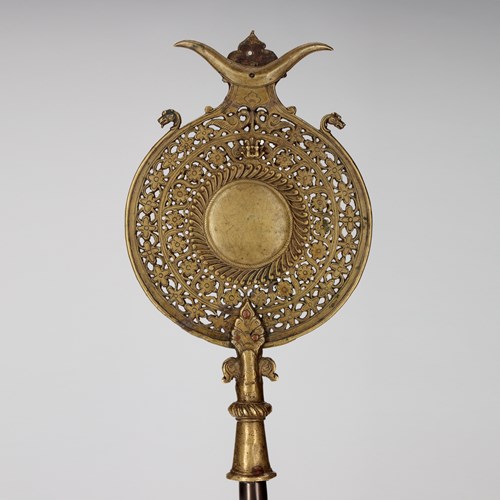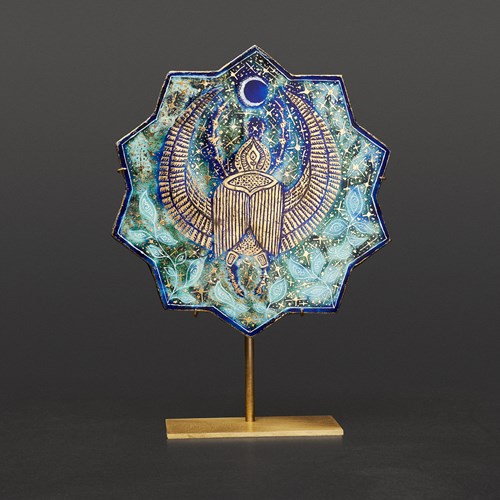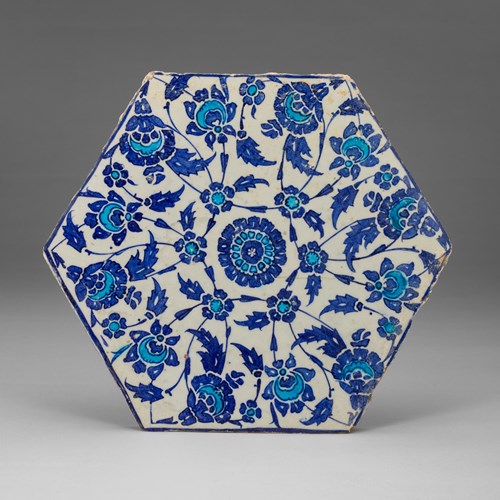Marketplace
Engraved Container
A large, richly engraved brass container with a domed lid. Across the base and lid, floral designs dominate. The body of the box has a repeating pattern of large lobed cartouches filled with branches of flowers. Around the cartouches are vines and scrolls, and each cartouche is separated by five pairs of leaves. Smaller cartouches, each housing a lotus, run across the rim of the lid. The lid, which is topped with a ring, is decorated with a leaf diaper pattern. Brass boxes of this design were typically used as pandans; however, this box is nearly twice the size of those examples.1 Like a box illustrated in Zebrowski (1997, figures 457a and b), the size of this example may be more consistent with turban box rather than a pandan.2
With regards to the decorations of these brass boxes, Zebrowski points out that boxes made for Muslim patrons usually only had floral decorations whilst, ‘Hindu patrons – especially those far from the Mughal and Deccani courts – preferred objects decorated with figures.’3 Often, these would depict scenes of Krishna and the gopis. Rajasthani boxes frequently depicted animals as well as human figures. Interestingly, although the present example appears to be covered only in floral decoration, on closer inspection a single human figure can be found on the side of the box. Rather than as part of a scene, she is depicted alone, immediately to the left of one of the hinges. The figural decoration suggests that the box could be Pahari (from the northern Indian hills).
1 Zebrowski, Mark. Gold, Silver & Bronze from Mughal India. London: Alexandria Press in association with Laurence King, 1997, p. 267
2 Ibid., p. 272
3 Ibid., p. 272
With regards to the decorations of these brass boxes, Zebrowski points out that boxes made for Muslim patrons usually only had floral decorations whilst, ‘Hindu patrons – especially those far from the Mughal and Deccani courts – preferred objects decorated with figures.’3 Often, these would depict scenes of Krishna and the gopis. Rajasthani boxes frequently depicted animals as well as human figures. Interestingly, although the present example appears to be covered only in floral decoration, on closer inspection a single human figure can be found on the side of the box. Rather than as part of a scene, she is depicted alone, immediately to the left of one of the hinges. The figural decoration suggests that the box could be Pahari (from the northern Indian hills).
1 Zebrowski, Mark. Gold, Silver & Bronze from Mughal India. London: Alexandria Press in association with Laurence King, 1997, p. 267
2 Ibid., p. 272
3 Ibid., p. 272
More artworks from the Gallery









